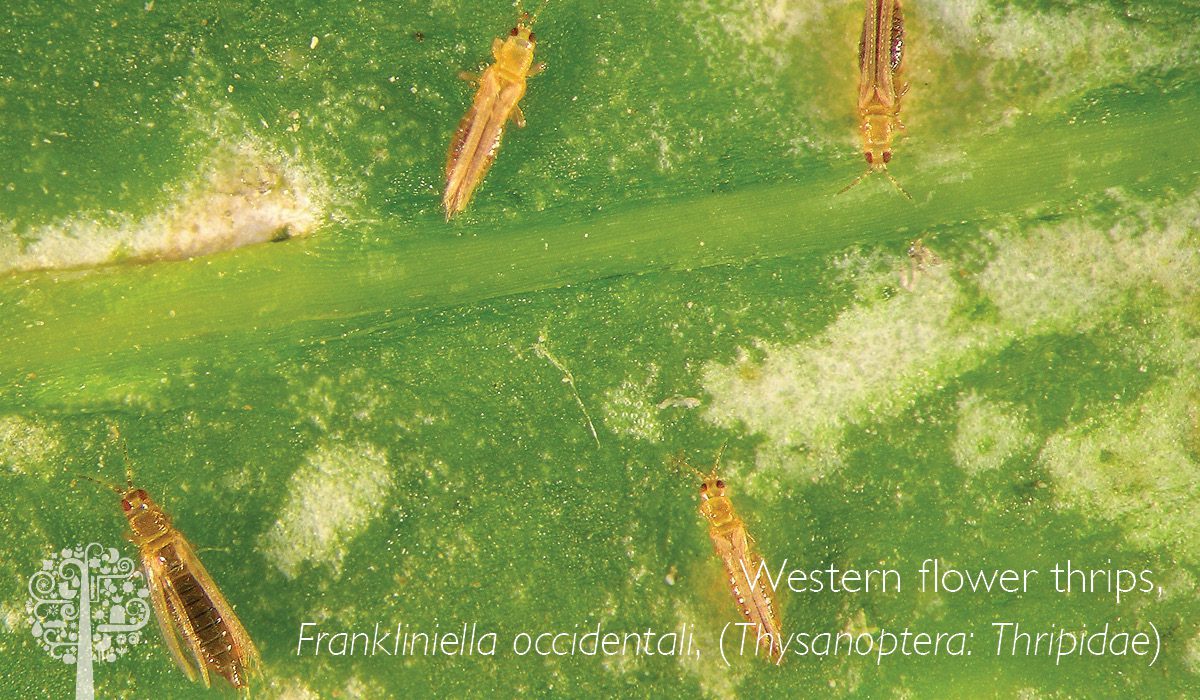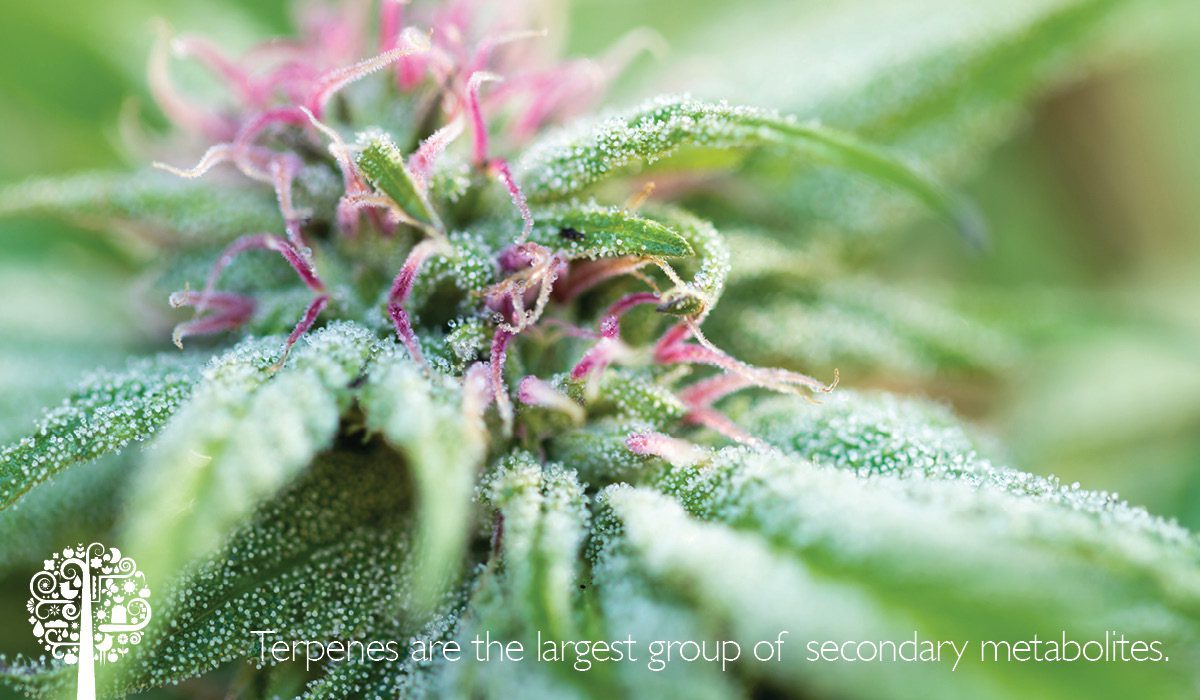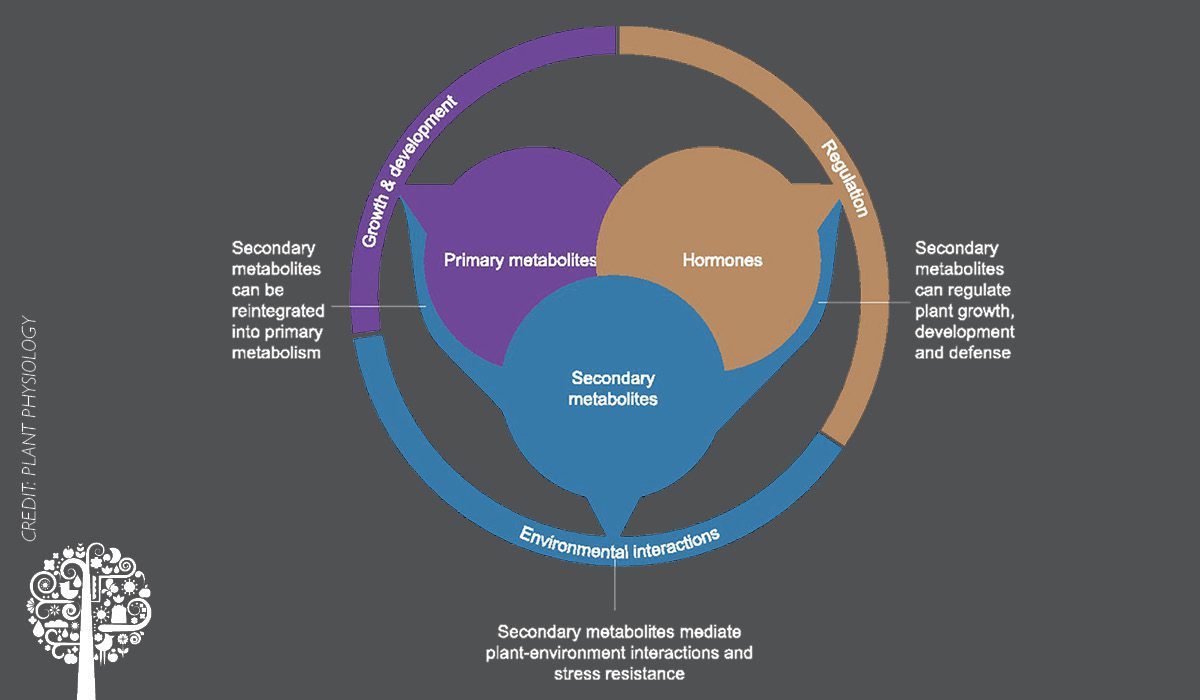Plants are robust and adaptable organisms capable of producing a chemical arsenal of compounds to defend themselves, all the more impressive when considering the limited supply of chemicals they have to work with. Stress is the application of pressure on a system that prevents it from running at an optimal level, upsetting its balance and cellular homeostasis. Plant stress is divided into abiotic stress, resulting from non-living factors, and biotic stress, exerted by living organisms – commonly called pests. In this article, we’ll be examining the latter, especially the role that terpenes play in a plant’s battle to balance its resources in the short time it has to mature and fruit. Of course, it’s not a fight plants always win. We’ll also look at the role terpenes play in the essential practical applications for humanity.
Pests Stress Plants
Humans, cattle, and grazing herbivores are all pests from a plant’s perspective, and plants have evolved to protect themselves in several resourceful ways. Anyone who has been stung by a nettle understands the plant’s defense mechanism, while cattle will be familiar with the repellent flavor of many of the things they eat. But, of course, any gardener knows that insects and microbial life pose a far greater threat to plants.

Some insects, including thrip, whitefly, and spider mites, will feed on the sugar-rich sap in the leaf, destroying it from the inside out. At infestation levels, they can be devastating to a crop. This damage also opens the door to further infection from microbes; the main culprits are pathogenic fungi and viruses, nematodes, bacteria, protozoa, and arthropods. Stress exerted by any of these sources can result in irreversible damage to plant cells.
Chemical Warfare
Secondary metabolites are compounds within an organism that do not directly play a role in its normal growth, development, or reproduction. Instead, they enhance the chances of survival. Plants produce them in response to stress as well as to aid in symbiotic relationships with neighboring organisms. Secondary metabolites form a large category of compounds, with the hundreds of thousands identified to date likely representing a fraction of those in existence.
Phytoalexins are a type of secondary metabolite, a large group of broad-spectrum antibiotics with low-molecular-weight. These include terpenoids and flavonoids, along with other compounds such as stilbenes. This important form of pest control relies on releasing chemicals being triggered by an elicitor (cells from the pathogen) binding to the plant’s cell wall. It prompts a cascade of signals, which eventually stimulate the transcription of genes to synthesize the appropriate phytoalexins or other defense molecules.
Terpenes
Terpenes are the largest group of secondary metabolites. These volatile compounds produce the distinctive aroma of many plants, including pine trees, lavender, and rosemary. While their smell is often pleasant from a human perspective and to many pollinators, they also serve as an antimicrobial and anti-herbivory defense mechanism.

Glandular trichomes, the small hairs on the surface of plants, are the primary delivery system for terpenes. When plants are attacked or wounded, the glandular trichomes are broken and release their contents. In heavy rain, trichomes are also washed from the leaves into the ground, where they suppress the growth of competing plants. While a plant’s ability to produce so many compounds is impressive, the fact that these compounds can interact with one another to produce entirely independent outcomes is all the more so. What they can do in the human body is equally exceptional.
Human Application
Humans have utilized plants for their scents and flavors for time untold, but modern science has opened the door to their vast potential for medical applications. Where once lavender kept your clothes smelling fresh and rosemary masked the taste of high meat, today, plant extracts – more specifically terpenes – are being used in the treatment of severe epilepsy. With the ending of the prohibition of cannabis, not only has a vast amount of research been undertaken into the pharmaceutical applications of terpenes and other secondary metabolites within cannabis, but their use in treatment already shows incredibly positive outcomes for seriously debilitating conditions.
Finding Balance
In scientific terms, it’s only recently that modern methods have allowed us to view plants from a detailed microscopic perspective. As a result, our perception of what qualifies as a pest is changing rapidly, especially as we learn more about the deep complexity of the interdependent relationships between plants and the organisms that survive alongside them. For example, microbes are by no means entirely harmful, with research on symbiotic microbes showing a positive effect on plant size when applied to the roots. Endophytes, microbes that are more commonly fungus or bacteria, live between plants’ cells and have been proven to modulate and mimic secondary metabolites produced by the host plant.

These discoveries’ practical applications are already changing the way we operate, with the human use of pesticides proving far more damaging than we ever envisaged. By understanding the defensive mechanisms plants use, we can better facilitate their own ability to fight off pests. This can be as simple as ensuring they have all the nutrients and optimal environmental factors necessary to ramp up their natural defenses. Growing them alongside companion plants and using biological control methods, like predatory insects such as ladybirds, replaces man-made pesticides.
Similarly, plants’ fascinating defense mechanisms have financial benefits; controlled exposure to pests increases the production of secondary metabolites, skewing the received wisdom that a profitable crop is one vast monoculture free of pests or any other ‘contaminants’.
The multifunctional solutions plants utilize from the relatively small pool of chemicals they have to work is nothing short of genius – they’re currently far better chemists than we are! Learning from them gives us a shortcut through the millennia of evolution that brought them to where they are today, better equipping humanity to face that very same battle for survival.